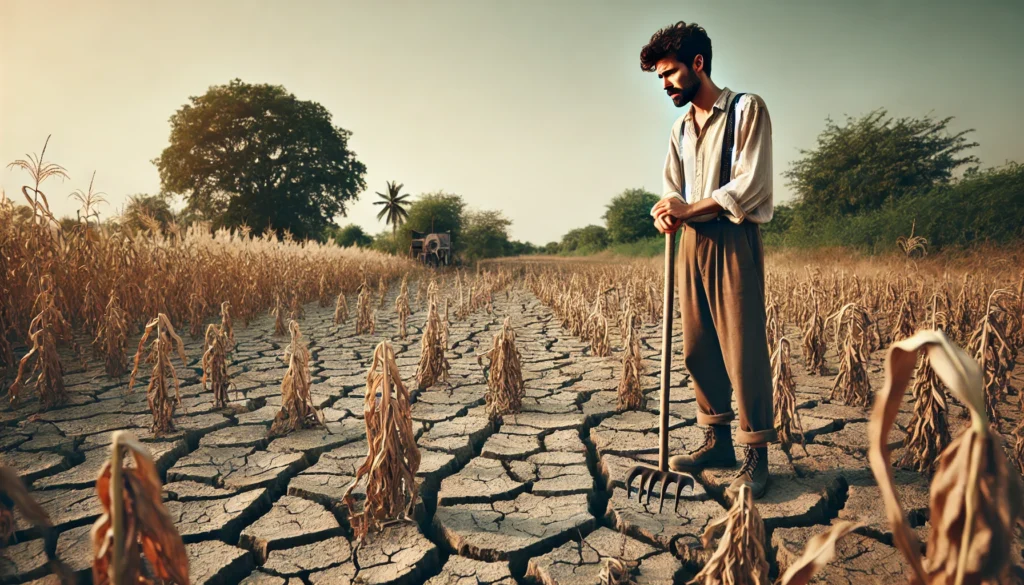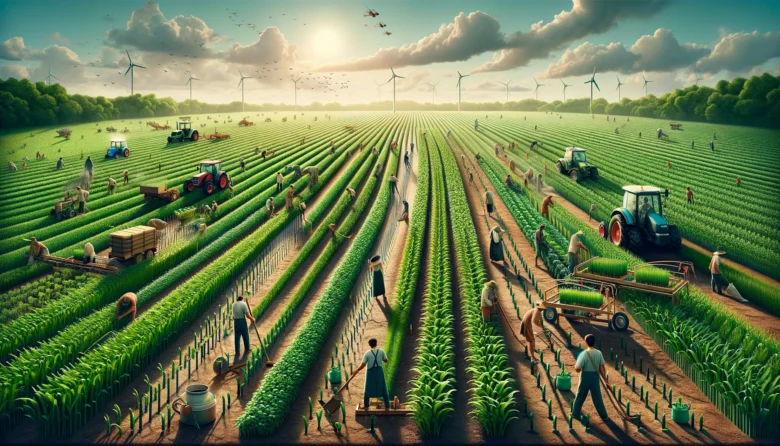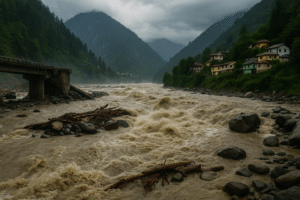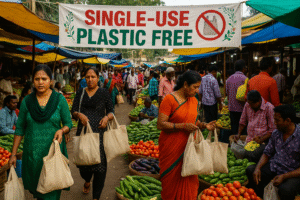Hello everyone! Today, we’re discussing a crucial and timely topic: how climate change affects food security. This issue is especially significant for us in India, where agriculture is central to our economy and daily lives. Let’s explore how changing climate patterns affect our food supply and what we can do about it.
Introduction
Climate change involves more than just rising temperatures; it encompasses widespread disruptions to weather patterns and ecosystems. These changes significantly impact food security, which includes the availability, access, and affordability of food. In India, where a large portion of the population depends on agriculture for their livelihood, the effects of climate change on food security are particularly worrisome. In this blog, we will delve into the ways climate change is affecting our food supply and discuss potential solutions.
How Climate Change Affects Agriculture
1. Changing Rainfall Patterns
One of the most noticeable impacts of climate change is the alteration of rainfall patterns. In India, the monsoon season is crucial for agriculture. However, climate change has made monsoon patterns increasingly unpredictable, with some regions experiencing excessive rainfall and others facing droughts. This inconsistency can devastate crops, leading to lower yields and food shortages.
2. Temperature Extremes
Rising temperatures are another major concern. Extreme heat can stress plants, reduce crop yields, and even lead to crop failure. For instance, high temperatures can accelerate the evaporation of water from soil and plants, leading to water stress. Crops like wheat and rice, which are staples in India, are particularly vulnerable to heat stress.

3. Pests and Diseases
Climate change also affects the prevalence and distribution of pests and diseases. Warmer temperatures and changing humidity levels can create favorable conditions for pests and pathogens, which can destroy crops. Farmers might need to use additional pesticides, which can drive up costs and harm the environment.
4. Soil Degradation
More frequent extreme weather events, such as heavy rains and floods, can cause soil erosion and degradation. Healthy soil is crucial for crop growth, and its deterioration can severely affect agricultural productivity. Soil degradation also reduces the land’s ability to retain water, exacerbating the effects of droughts.
Impact on Food Security
1. Availability
Climate change affects the availability of food by disrupting agricultural production. Lower crop yields and increased crop failures mean that there is less food available for consumption. This can lead to food shortages, especially in regions heavily dependent on agriculture.
2. Access
Access to food is another critical aspect of food security. Climate change can affect food prices, making it more difficult for people, especially those with low incomes, to afford nutritious food. Additionally, extreme weather events can disrupt transportation and supply chains, further hindering access to food.
3. Nutrition
Climate change also influences the nutritional quality of food. Elevated carbon dioxide levels can decrease the nutrient content of crops, affecting the food’s quality. For instance, research indicates that higher CO2 levels can reduce the protein, zinc, and iron content in staple crops like wheat and rice.
4. Livelihoods
For many Indians, agriculture provides not only food but also a source of income. Climate change threatens the livelihoods of farmers, making it harder for them to sustain their families and communities. This economic instability can further exacerbate food insecurity.
Solutions and Adaptation Strategies
1. Sustainable Farming Practices
Adopting sustainable farming practices can help mitigate the impact of climate change on agriculture. Practices such as crop rotation, conservation tillage, and agroforestry can enhance soil health and boost resilience to extreme weather. Organizations like the M.S. Swaminathan Research Foundation (an Indian non-profit working on sustainable agriculture) are promoting these practices among farmers.
2. Diversifying Crops
Diversifying crops can reduce the risk of crop failure and improve food security. Growing a variety of crops can ensure that if one crop fails, others can still provide food and income. Crop diversification also helps improve soil health and reduce pest and disease outbreaks.
3. Improved Irrigation Systems
Efficient irrigation systems can help address water scarcity and ensure that crops receive adequate water. Drip irrigation and sprinkler systems are more efficient than traditional flood irrigation and can significantly reduce water usage. The Indian government’s Pradhan Mantri Krishi Sinchayee Yojana (PMKSY) aims to improve irrigation infrastructure across the country.
4. Early Warning Systems
Implementing early warning systems for extreme weather events can help farmers better prepare and adapt. Weather forecasting and climate modeling can provide crucial information about upcoming weather patterns, allowing farmers to make informed decisions about planting and harvesting.
5. Policy Support
Government policies and support are crucial for helping farmers adapt to climate change. Subsidies for climate-resilient crops, financial support for sustainable farming practices, and investment in agricultural research can all play a role in improving food security.
The Role of Technology
1. Precision Agriculture
Precision agriculture involves using technology to optimize crop yields and reduce waste. Tools like GPS, sensors, and drones can provide detailed information about soil health, weather conditions, and crop needs. Companies like Mahindra & Mahindra (an Indian multinational corporation) are developing precision farming technologies to help farmers increase productivity.
2. Genetic Engineering
Genetic engineering can assist in developing crops that are resilient to climate change. Scientists are working on creating crop varieties that can withstand extreme temperatures, droughts, and pests. These genetically modified crops can help ensure food security in the face of climate change.
3. Digital Platforms
Digital platforms and mobile apps can offer farmers real-time information and resources. Apps like Kisan Suvidha (an Indian government initiative) offer weather updates, market prices, and expert advice to farmers, helping them make informed decisions and improve their yields.
Conclusion
Climate change significantly threatens food security, but with effective strategies and technologies, we can alleviate its impact. By adopting sustainable farming practices, leveraging technology, and supporting farmers through policies and programs, we can build a resilient agricultural system that ensures food security for all. Let’s collaborate to create a future where everyone has access to nutritious and affordable food despite the challenges posed by climate change.
Author’s Note
Thank you for reading! I hope this blog has given you valuable insights into how climate change affects food security and what we can do to address this issue. Together, we can make a difference and ensure a sustainable future for everyone.
G.C., Ecosociosphere contributor.




